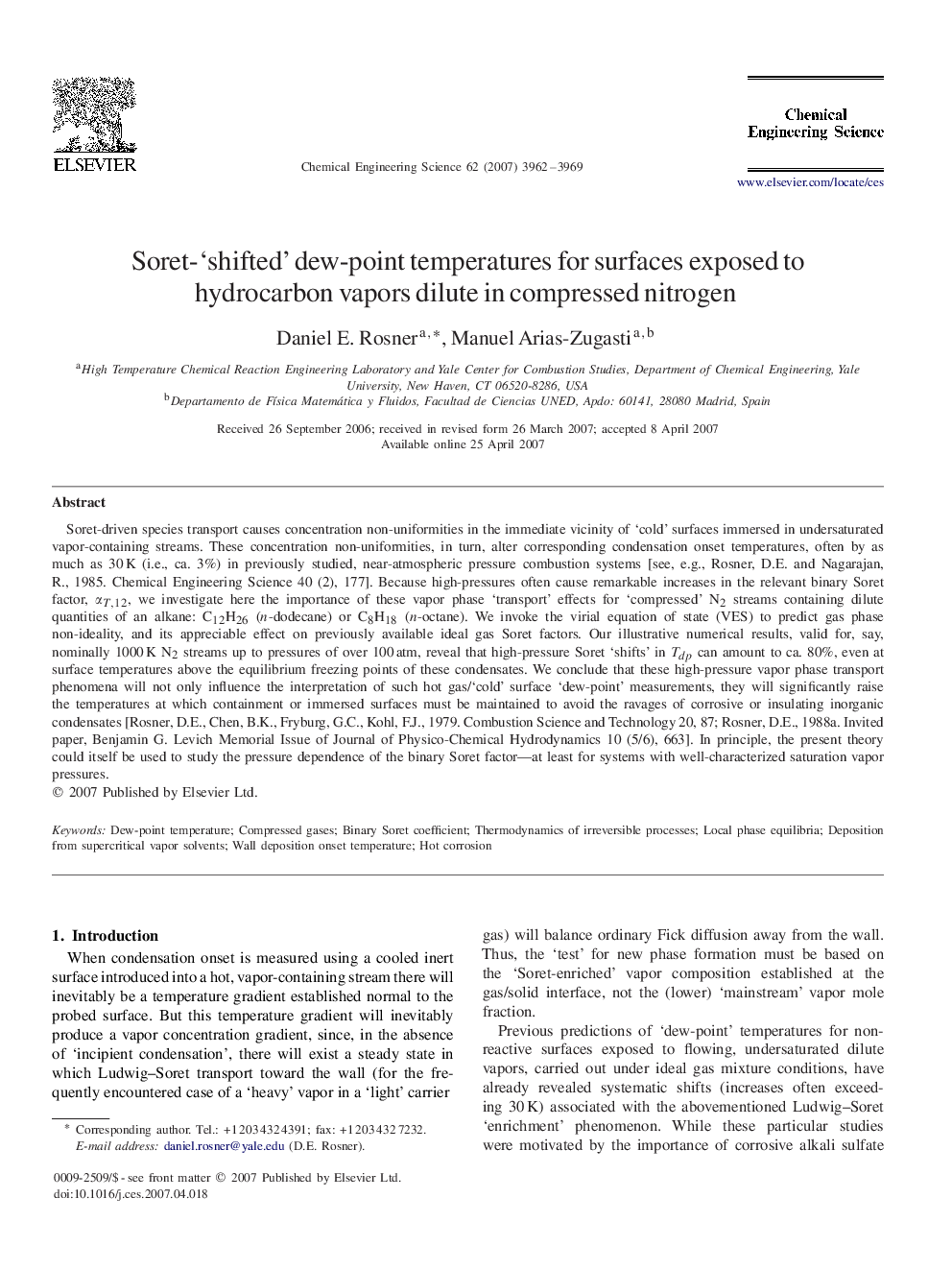| Article ID | Journal | Published Year | Pages | File Type |
|---|---|---|---|---|
| 158125 | Chemical Engineering Science | 2007 | 8 Pages |
Soret-driven species transport causes concentration non-uniformities in the immediate vicinity of ‘cold’ surfaces immersed in undersaturated vapor-containing streams. These concentration non-uniformities, in turn, alter corresponding condensation onset temperatures, often by as much as 30 K (i.e., ca. 3%) in previously studied, near-atmospheric pressure combustion systems [see, e.g., Rosner, D.E. and Nagarajan, R., 1985. Chemical Engineering Science 40 (2), 177]. Because high-pressures often cause remarkable increases in the relevant binary Soret factor, αT,12αT,12, we investigate here the importance of these vapor phase ‘transport’ effects for ‘compressed’ N2 streams containing dilute quantities of an alkane: C12H26 (nn-dodecane) or C8H18 (nn-octane). We invoke the virial equation of state (VES) to predict gas phase non-ideality, and its appreciable effect on previously available ideal gas Soret factors. Our illustrative numerical results, valid for, say, nominally 1000 K N2 streams up to pressures of over 100 atm, reveal that high-pressure Soret ‘shifts’ in TdpTdp can amount to ca. 80%, even at surface temperatures above the equilibrium freezing points of these condensates. We conclude that these high-pressure vapor phase transport phenomena will not only influence the interpretation of such hot gas/‘cold’ surface ‘dew-point’ measurements, they will significantly raise the temperatures at which containment or immersed surfaces must be maintained to avoid the ravages of corrosive or insulating inorganic condensates [Rosner, D.E., Chen, B.K., Fryburg, G.C., Kohl, F.J., 1979. Combustion Science and Technology 20, 87; Rosner, D.E., 1988a. Invited paper, Benjamin G. Levich Memorial Issue of Journal of Physico-Chemical Hydrodynamics 10 (5/6), 663]. In principle, the present theory could itself be used to study the pressure dependence of the binary Soret factor—at least for systems with well-characterized saturation vapor pressures.
